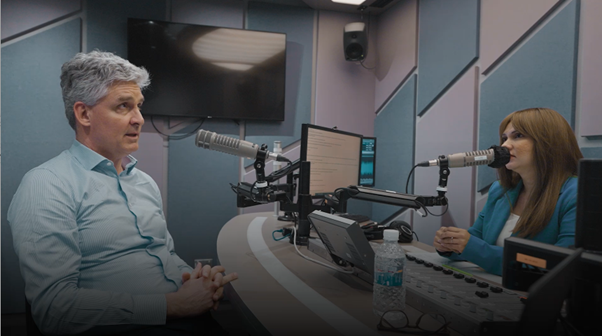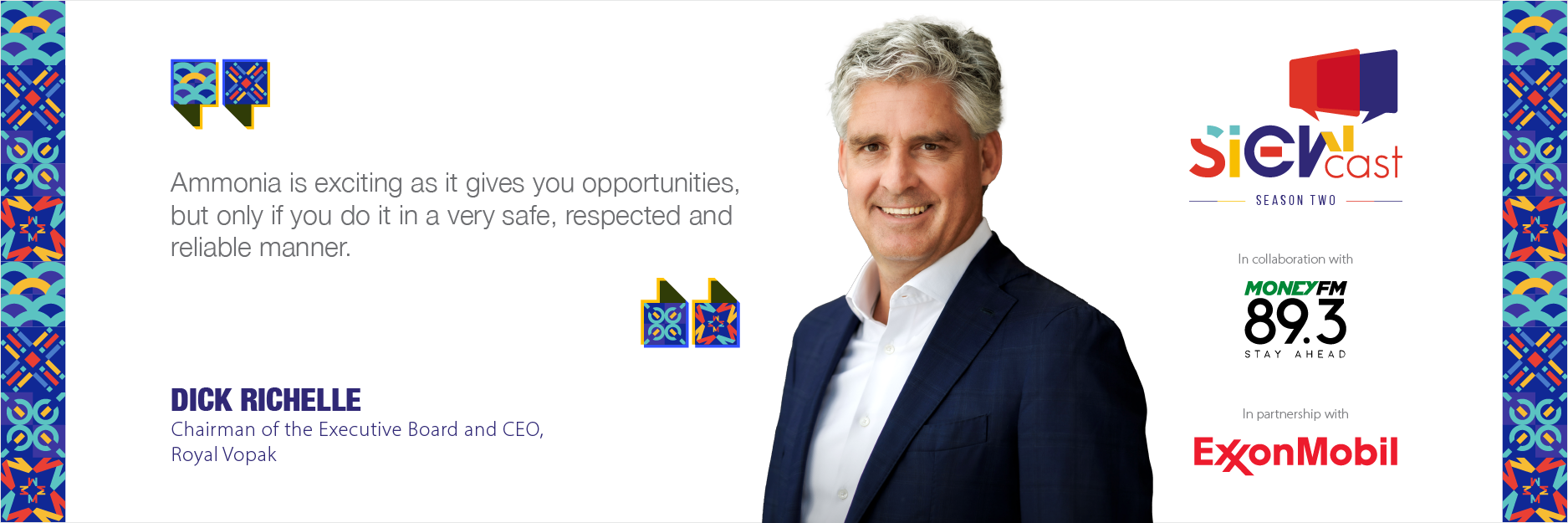Ammonia is at the forefront of Vopak's vision for a sustainable energy future. In this episode of SIEWCast, Money FM 89.3's Michelle Martin engages Dick Richelle, Chairman of the Executive Board and CEO of Royal Vopak, to explore the pivotal role of ammonia in reshaping energy systems. Gain insights on the company's innovative approach towards green technologies, and how its energy storage solutions are charting a path to a cleaner, low-carbon future.
Show Notes:
In this episode, we discuss…
- Royal Vopak's strategic pivot towards repurposing infrastructure for low carbon fuels such as ammonia, highlighting its role in the energy transition.
- Singapore's importance to Royal Vopak's global strategy, especially in terms of ammonia storage.
- The role of carbon capture, utilisation, and storage within Royal Vopak's broader climate agenda.
- Royal Vopak's integral role in interim CO2 storage solutions for a cleaner future.
- The need for collaborative efforts and partnerships in developing infrastructure for new energy systems.

Key takeaways
00:21 | | Royal Vopak is strategically shifting towards sustainable energy solutions. It is investing 1 billion euro by 2030 to develop its base of industrial and gas terminals. It has also earmarked an additional billion for new technologies. |
05:58 | | The company is repurposing its infrastructure to support ammonia as a clean energy carrier for hydrogen. Ammonia's high energy density makes it an attractive option for efficiently transporting hydrogen over long distances. |
06:12 | | Existing infrastructure for ammonia, such as ships and storage facilities, facilitates its use as a hydrogen carrier. This infrastructure is accessible at both the production and consumption sites, positioning ammonia as a viable option within the global energy supply chain. |
06:24 | | While ammonia's potential is recognised, its handling requires careful management due to its toxic properties. Collaborating with authorities and communities for safe and responsible handling is crucial to harnessing ammonia's benefits. |
08:32 | | Carbon capture, utilisation, and storage (CCUS) is viewed as a pivotal technology that significantly contributes to global CO2 reduction efforts. Vopak is not directly involved in the underground storage of CO2. Instead, it aids in the interim storage of CO2, facilitating its transportation to final storage destinations. |
10:04 | | Royal Vopak is actively involved in consortiums, such as in the Netherlands, to develop interim liquid CO2 storage solutions. The company expressed keen interest in spearheading similar ventures in Singapore. |
12:07 | | Collaborative efforts are essential for establishing new supply chains and ensuring the economic viability of infrastructure projects. These include those for storing green or blue ammonia. |

About our guest Mr Dick Richelle started his career with Royal Vopak in 1995. He served in a variety of management roles in Latin America and Europe. Mr Richelle led the Vopak divisions in the Americas and Asia & Middle East as President and headed the Global Commercial and Business Development activities. He has been a member of the Strategic Committee of Royal Vopak since 2009. Mr Richelle has been Chairman of the Executive Board and Chief Executive Officer of Royal Vopak since January 2022. |
Additional Resources
- Vopak Singapore explores expanding its ammonia infrastructure for low carbon power generation and bunker fuel
You can find the transcript of this episode here.
- Sign up for the SIEW newsletter to get notified about future SIEWCast episodes straight to your inbox.
- Register your interest for the Singapore International Energy Week (SIEW) 2024, taking place on 21-25 October.
This SIEWCast episode is brought to you by Singapore International Energy Week and Money FM 89.3, in partnership with ExxonMobil.